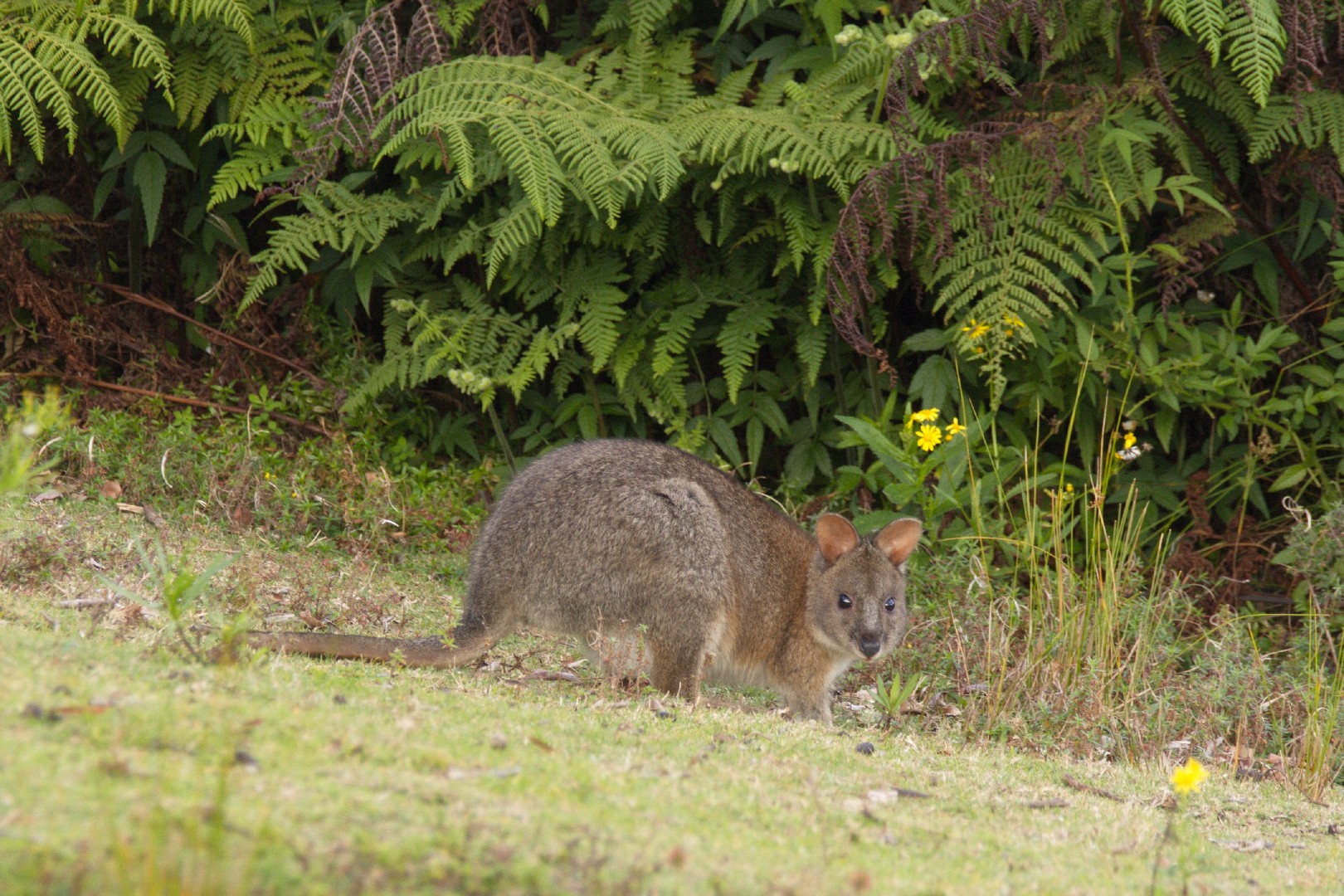Red-necked pademelon
A species of Pademelons Scientific name : Thylogale thetis Genus : Pademelons
Red-necked pademelon, A species of Pademelons
Scientific name: Thylogale thetis
Genus: Pademelons
Content
Description General Info
 Photo By Donald Hobern , used under CC-BY-2.0 /Cropped and compressed from original
Photo By Donald Hobern , used under CC-BY-2.0 /Cropped and compressed from original Description
A small species of macropod, it has a head and body length of 29–62 cm, a tail length of 27–51 cm and mean weight of 3.8 kg for females and 7.0 kg for males. Mainly nocturnal, the red-necked pademelon is very shy and generally inhabits temperate forests near grassland, hiding in the forests by day and emerging into the grasslands to graze in the dusk. The red-necked pademelon is brown-grey with a cream underbelly and a red-tinted neck and shoulders. It breeds in the autumn and spring in northern Australia, and in the summer in southern Australia. Predators include the dingo and the red fox, however habitat destruction, particularly through land clearance, is currently the largest threat to the species. The red-necked pademelon is not currently listed as an endangered species. This species is closely related to the red-legged pademelon. 
General Info
Lifespan
5-11 years
Diet
Red-necked pademelon primarily indulges in a herbivorous diet of leaves, stems, and bark. This species is specifically fond of eucalyptus and acacia tree foliage, consuming these in significant amounts.
Appearance
The red-necked pademelon is a medium-sized creature, featuring a compact body shape with short, soft fur. Its coloration is generally reddish-brown, but can also vary towards grey or even black. Remarkably, it displays a contrasting lighter underbody. This creature is distinguished by its tapered snout and elongated hind legs, resembling a kangaroo's. There are no notable dissimilarities in appearance between genders, ages, or subspecies.
Behavior
Red-necked pademelon is a nocturnal herbivore, foraging on leaves, flowers, and bark. It employs a solitary lifestyle, avoiding confrontation with its conspecifics. It does not exhibit territorial behavior but has a unique wallowing habit, used possibly for thermoregulation and to remove parasites. In order to escape predators or threats, it swiftly bounds away using its powerful hind legs.
Population
Stable
Scientific Classification
Phylum
Chordates Class
Mammals Order
Diprotodontians Family
Macropods Genus
Pademelons Species
Red-necked pademelon